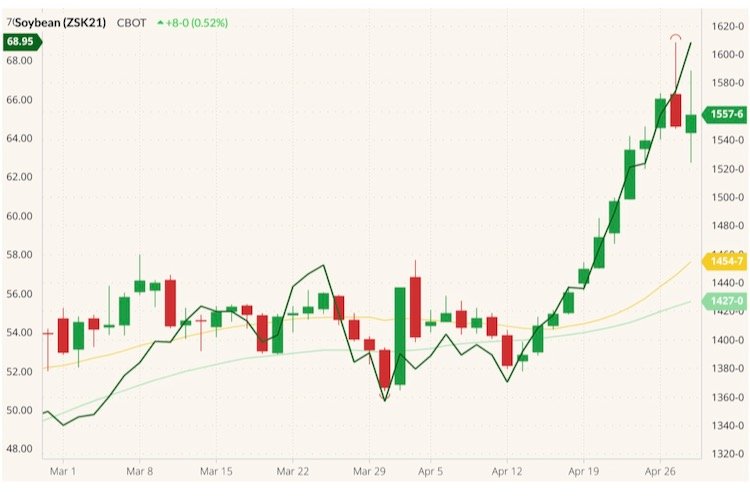MarketsFarm — At the Chicago Board of Trade, old-crop contracts for corn and soybeans were trading at continually rising prices over the past week and one analyst believes there is a short squeeze.
The May corn contract went from about $6.50 per bushel on April 22 to $7.20/bu. five days later (all figures US$). Over the same five-day period, the May soybean contract increased to $16.10/bu., from $15.30.
In both cases, the prices reached Tuesday had not been seen since July 2013.
Sean Lusk, co-director of Walsh Commercial Hedging Services in Chicago, said the rising prices are indicative of crop scarcity while more funds are entering the markets. Delayed and weakened growing conditions in South America, as well as export quotas in Europe, have also affected prices.
Read Also

Alberta crop conditions improve: report
Varied precipitation and warm temperatures were generally beneficial for crop development across Alberta during the week ended July 8, according to the latest provincial crop report released July 11.
“The May/July corn spread had widened out to 55 (cents) over. May/July soybeans is at almost 40 over,” he said. “That’s telling you there’s a short squeeze occurring in the market with old-crop contracts due to the availability of not having enough corn or beans domestically.”
Producers are holding on to their own stock and trading it like it was “bitcoin and gold,” he added.
“These squeezes are usually short-term in nature and they go on for a week or two, but if you look at a chart and look at the performance of May corn or May soybeans, the rallies have been phenomenal.”
Wheat futures were trading steady over the past week, but crops in the U.S. and Canada continue to be hard hit by dry conditions and cold weather events.
“There have been some poor condition ratings for the hard red winter wheat states, most notably Oklahoma and Texas. Colorado’s not looking too good, Kansas is OK,” Lusk said.
“You have (weather) issues in China, issues in the European Union, in the major wheat-growing areas in the world… From an ending stocks or carryover perspective, you don’t have the excesses you had in years past,” he said.
“You can make an argument, and this is my opinion, you won’t see a massive sell-off until July 4 weekend.”
— Adam Peleshaty reports for MarketsFarm from Stonewall, Man.















